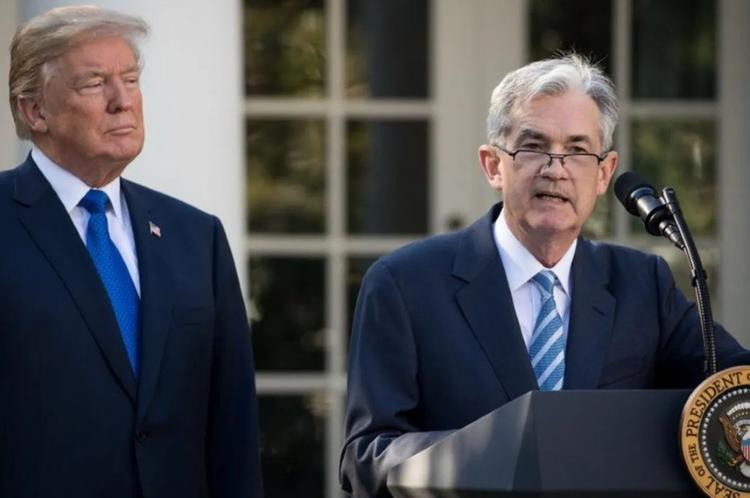If President Donald Trump follows through on rumours that he will nominate Jerome Powell’s successor this summer—nearly a year before the incumbent’s term ends—he will ignite the most serious test of Federal Reserve independence since the Treasury–Fed Accord of 1951. News of the plan to have a shadow Fed chair has already driven the dollar to a three-year low and pushed bond yields down as investors price in a politicised pivot to easier money. At stake is not merely one man’s job but the credibility of an institution that anchors global faith in America’s economic governance.
The notion of announcing a Fed chair-in-waiting—first floated last year by then–Treasury Secretary Scott Bessent—has returned with vigour. According to market reports, the shortlist now includes former governor Kevin Warsh, National Economic Council director Kevin Hassett, Treasury Secretary Bessent himself, sitting governor Christopher Waller and World Bank president David Malpass. Each brings a distinct ideological hue, but they share one trait prized by the White House: a willingness to cut rates sharply in an election year.
READ I Will reserves shield rupee from twin-deficit pressure
Fed independence on the line
Appointing a shadow chair is not unlawful; it is simply unprecedented in modern times. Yet precedent is precisely what gives institutions ballast. Lyndon Johnson twisted William McChesney Martin’s arm on his Texas ranch, Richard Nixon browbeat Arthur Burns, and Ronald Reagan dispatched James Baker to scold Paul Volcker. All three presidents worked behind closed doors. Trump’s open audition is different: it turns monetary policy into another televised reality show, with candidates rewarded for flattering the host rather than for guarding the dollar.
For half a century, the Fed’s quasi-autonomy has insulated day-to-day decisions from partisan imperatives. That arm’s-length status is why US Treasuries remain the world’s risk-free benchmark and why the Fed’s word can still move markets more than any other central bank’s. Undercutting Powell in mid-term would shred that insulation—especially if the nominee spends the coming months signalling policy preferences to please Pennsylvania Avenue.
The damage would not be limited to 2025. Future chairs, reading today’s lesson, would know they serve at the pleasure of whoever commands the West Wing’s social-media feed. As Report 3 warns, a template of relentless presidential pressure risks decades of accumulated credibility. Investors may then demand a premium to hold long-dated Treasuries, lifting borrowing costs for households and government alike.
Markets are already reading the tea leaves
The mere whiff of political capture has weakened the greenback by more than 10 per cent this year and buoyed gold to fresh peaks. State Street data show speculative positions now net short dollars for the first time since the pandemic, largely because traders believe the next chair “will be more amenable to big cuts than Powell has been.” That slide, if it persists, could threaten the dollar’s reserve-currency status—a privilege that saves the US an estimated 50 basis-point discount on its sovereign borrowing.
Bond markets tell a parallel story. The probability of a July rate cut has doubled to roughly one-in-four after two Trump-appointed governors, Michelle Bowman and Christopher Waller, said they would entertain an immediate easing if inflation holds steady. Lower short-term rates, when driven by political edict rather than data, risk un-anchoring the long end of the curve if investors fear inflation later. Fiscal dominance—cutting rates mainly to manage the Treasury’s debt-service bill—is a slippery slope last visited in the 1970s, and it ended badly.
Fractures inside the FOMC
The Federal Open Market Committee has not seen two governors dissent in the same meeting for 32 years. That record could be broken in July if Waller and Bowman vote to ease while Powell’s majority stands pat. The spectacle of public division, amplified by presidential tweets, would erode the mystique of consensus that gives Fed guidance its power.
Worse, an early nomination would place a chair-designee in the awkward position of second-guessing every Powell press conference. Should the successor disagree loudly, markets will discount Powell; should the successor defend current policy, he risks alienating his patron. Either path bruises institutional morale and muddies policy signals precisely when tariff-induced supply shocks demand clarity.
Institutional checks beyond Fed chair
Today’s controversy is not hermetically sealed within the marble walls of 20th Street. If a president can intimidate the Fed chair, why not the Federal Trade Commission, the Securities and Exchange Commission or, for that matter, an “independent” Justice Department? In political economy, norms are like trust: slow to build, quick to collapse. Report 4 on Senator Ted Cruz’s proposal to strip the Fed of its ability to pay interest on reserves is a reminder that congressional opportunists stand ready to piggy-back on any perception of weakness at the central bank.
For emerging-market democracies that look to Washington for norms of institutional restraint—including India, where I once held the finance portfolio—the lesson would be corrosive: politicise your central bank and markets will shrug. That is a dangerous export.
Prescription for damage control
Congress should act before the die is cast. First, it can require that any nomination for Fed chair made more than six months before the incumbent’s expiry be accompanied by a public certification from the chair-designate that he or she will respect the dual mandate and refrain from commenting on policy until sworn in. Second, the Senate should insist on a supermajority for early confirmation, raising the political cost of a premature appointment. Third, lawmakers must reaffirm the Fed’s operational tools—especially its authority to pay interest on reserves—so that future chairs are judged on outcomes, not on presidential favour.
Powell, for his part, should resist provocation. By keeping policy rooted in data, he can remind markets that independence lives not in parchment but in practice. The credibility of America’s monetary anchor—and the integrity of its wider constitutional architecture—depends on his steadiness and on Congress’s willingness to draw a bright institutional line. If ever there was a moment for legislative backbone, it is now.

